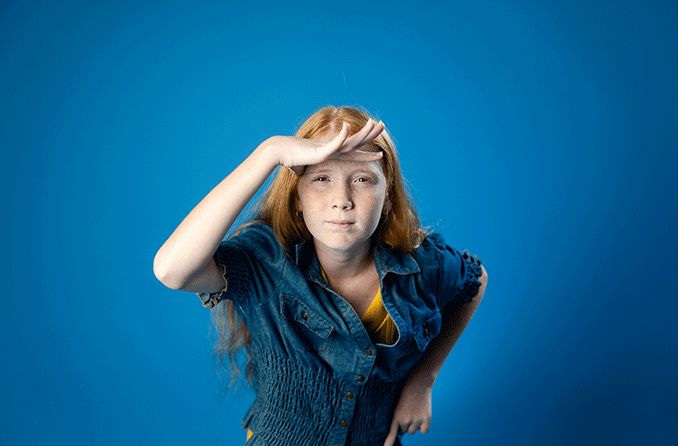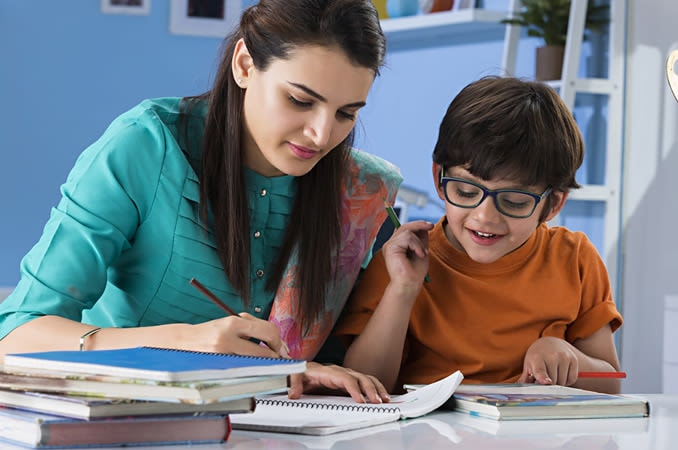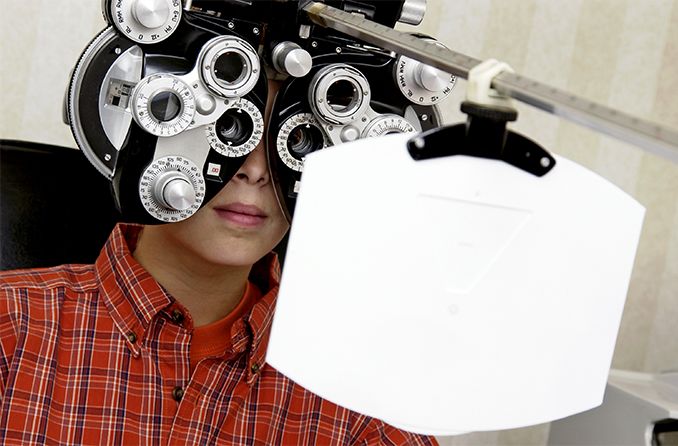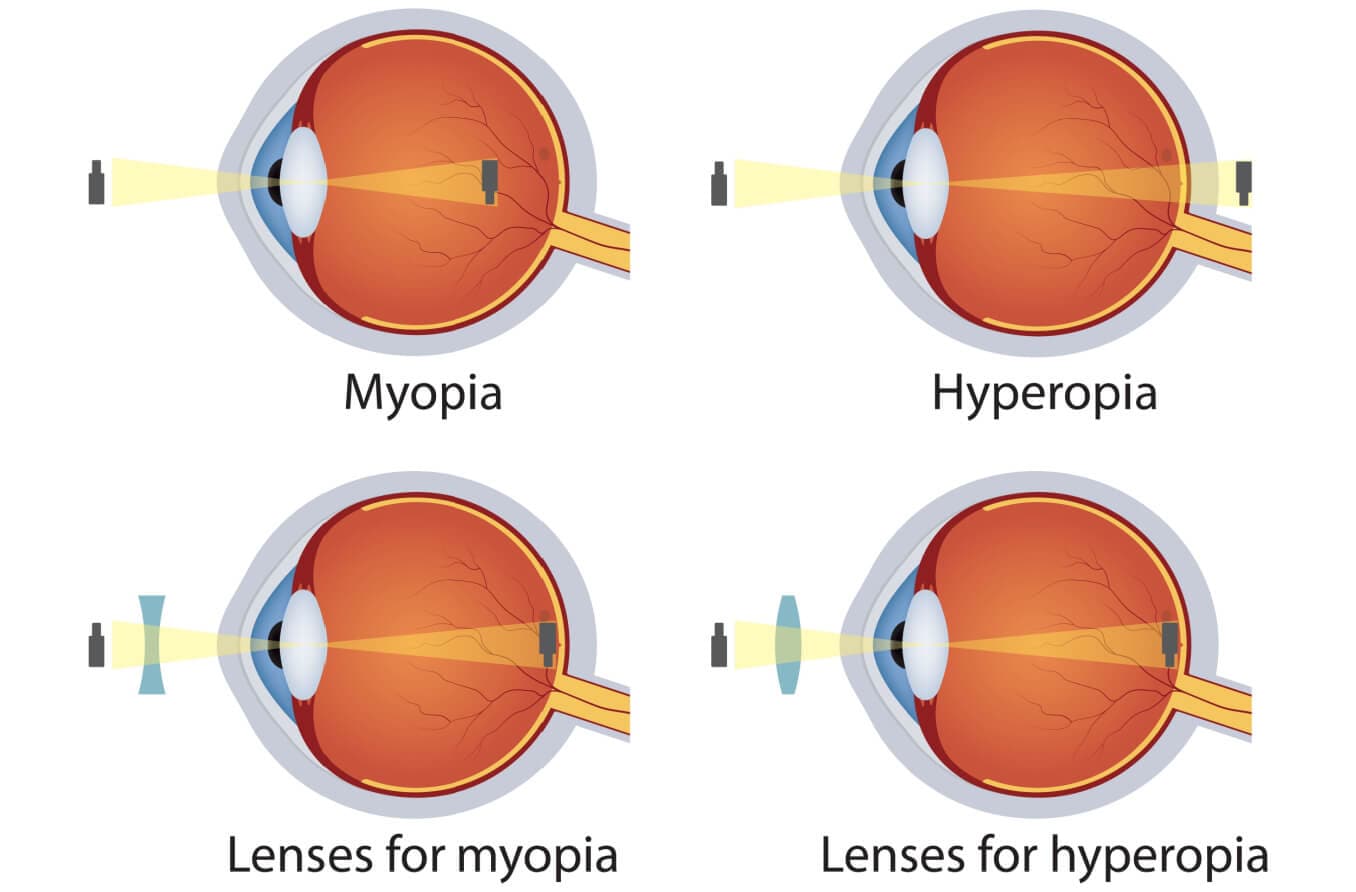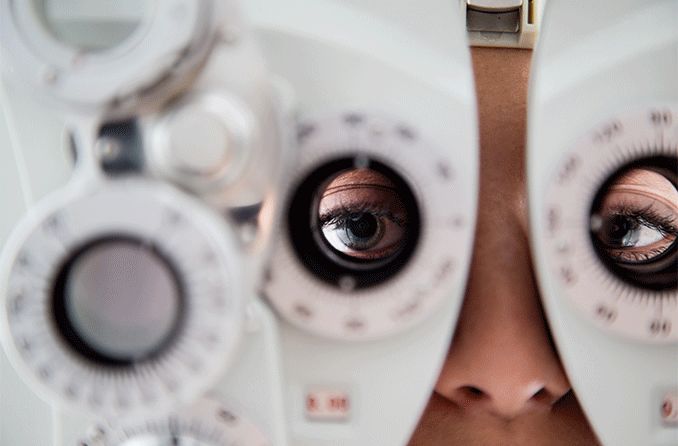Squinting in children
The habit of squinting, especially in children and teens, may be a sign of an uncorrected refractive error like myopia (nearsightedness), hyperopia (farsightedness) or astigmatism. The need for prescription glasses or contact lenses to treat such a vision issue can cause a child to squint.
Squinting may be accompanied by other habits, such as excessive blinking and eye rubbing. If you notice your child performing one or more of these habits, an eye exam can help determine the cause.
Squinting causes
The cause of your child’s squinting habit can be one of several possibilities. Problems with eye alignment and visual focus are the most common reasons a child may squint, as they are typically trying to achieve clearer vision.
The most common causes of squinting include:
Nearsightedness – Myopia is a refractive error that occurs when a person’s eyeball shape is slightly longer than normal. This causes a person to have blurry vision when focusing on distant objects.
Farsightedness – Hyperopia is a refractive error that occurs when a person’s eyeballs are a little shorter than normal. They are able to see clearly when focusing far away, but their near vision is blurry. Children with farsightedness often don’t notice blur unless they do near work for an extended time.
Astigmatism – Astigmatism is a refractive error that can make vision appear blurry at all distances. It occurs because the eye is shaped more like a football than a baseball and it’s particularly noticeable at nighttime and in low-light conditions.
When a child squints, it’s likely that they’re doing so to try and sharpen blurry vision. Refractive errors cause the image being viewed to fall in front of, behind, or away from the retina. If an image does not fall directly on the retina, it won’t be clear.
Squinting causes the shape of the eye to change slightly, which helps focus the image onto the retina. The top and bottom eyelids narrow when you squint, which alters the focus of the image you’re viewing. Squinting makes it easier for the object being viewed to fall on the retina and produce a clear image.
Other reasons for squinting
It’s possible for squinting to simply appear as a habit with no visual origin. Parents can monitor the pattern and presence of the squinting, and in many cases, it may resolve on its own.
Though rare, the cause of your child’s squinting could be a facial tic — an involuntary spasm that affects the muscles in the face. Facial tics are not related to refractive errors or strabismus.
Facial tics are seen most often in kids, and it’s possible for the tics to follow them into adulthood. While experts aren’t sure what exactly causes facial tics, it’s believed that stress makes the tics worse.
Be on the lookout for other facial tics, such as raising the eyebrows or scrunching the nose. Vocal tics, like clearing the throat, may also be present. If these tics persist, you should have your child examined by their pediatrician.
SEE RELATED: Eye twitching: Causes and treatments
Squinting and strabismus
In the past, the terms “squint” and “squint eye” were often used to describe strabismus, a condition in which the eyes are misaligned. This terminology can cause some confusion: Are squinting and “having a squint” related? In short, no.
The name “strabismus” comes from the Greek word strabismós , which translates as “to squint.” However, it’s unknown why the condition was given that name, because people with strabismus rarely have a habit of squinting .
Strabismus, also known as having a “crossed eye,” is a condition in which the eye muscles are weak, or not fully developed. This causes one eye to drift while the other eye focuses on a fixed object, and can lead to double vision.
As mentioned earlier, people usually squint to try and make their blurry vision sharper. But strabismus is a problem with the eye muscles, not the shape of the eyeball, and it causes double vision rather than blurry vision. For this reason, people with strabismus rarely benefit from squinting. Instead, they often close or cover one of their eyes to help relieve their symptoms.
If your child has a squinting habit, it is more likely that they have an uncorrected refractive error than strabismus. But if your child has difficulty keeping both eyes focused on a fixed point, or if they have a habit of closing or covering one of their eyes to see better or more comfortably, they may have strabismus.
SEE RELATED: Strabismus surgery
Can squinting be corrected?
Yes. If your child is squinting because of an uncorrected refractive error, it may be corrected with a pair of prescription glasses or contacts. The prescription lenses will focus incoming light and end your child’s need to squint.
Squinting caused by a facial tic may resolve on its own. But if the squinting continues, have your child examined by their pediatrician to rule out any underlying problems. If necessary, they will refer you to a neurologist or other specialist who can determine the best way to correct or manage symptoms.
Other vision-related habits in children
Squinting isn’t the only way to detect a vision problem in your child. The presence of these other common habits may mean your child needs an eye exam:
Excessive blinking – Blinking is the eye's way of staying moist and clearing dust, debris and other elements that may hinder vision. If your child’s vision isn’t clear, they may blink excessively — especially when focusing — to try and sharpen what they’re seeing.
Eye rubbing – When the eyes strain to focus, they can become tired or sore, which will prompt your child to rub them. Eye rubbing has its own set of hidden dangers, so if your child does it regularly, it’s important to have them receive an eye exam.
Covering or closing one eye – It’s possible to have weaker vision in one eye or to experience double vision when the eyes are not aligned. When this happens, children will often cover or close their “bad” eye in an attempt to see more clearly. This habit is commonly seen in children with strabismus or amblyopia.
Find a pediatric eye doctor near you to examine your child’s eyes and help relieve the cause of their squinting.
READ NEXT: What are eye patches used for?
